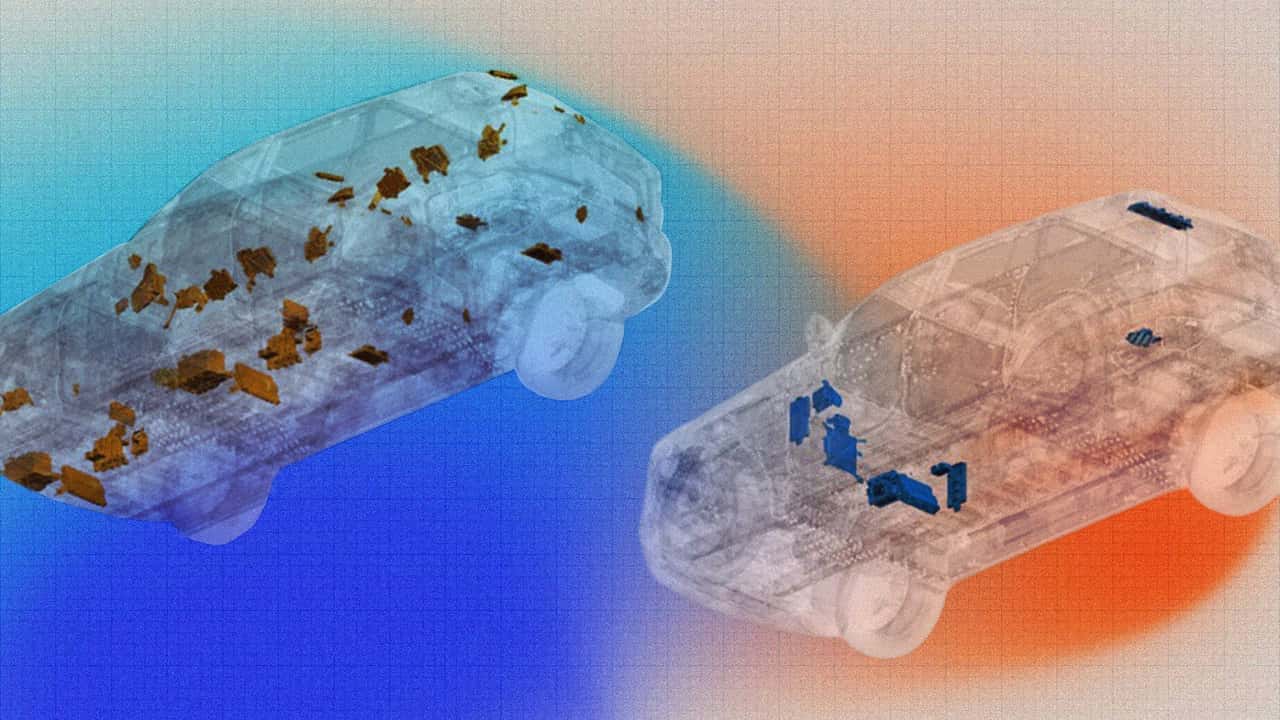UPDATE: General Motors (GM) has just unveiled a groundbreaking approach to vehicle design that promises to transform both gas and electric cars, announcing a new centralized compute architecture that will eliminate traditional fuse boxes. This technology, set to debut with the Cadillac Escalade IQ in 2028, aims to streamline vehicle operations and enhance performance.
This urgent development comes as GM recognizes the need to innovate in a market where electric vehicle (EV) sales are slowing and consumer preferences remain diverse. The centralized architecture will allow GM to integrate advanced software and features across all vehicle types, from compact gasoline cars in Latin America to full-size electric SUVs, providing a significant leap in automotive technology.
Speaking at the GM Forward tech event in New York City, GM’s Senior Vice President of Software and Services Engineering, David Richardson, emphasized the importance of this initiative. “In 2028, we’ll launch our next-generation centralized compute system… It’s propulsion-agnostic, which means that this technology will run across both electric and gas vehicles,” he stated, highlighting the versatility and efficiency of the new architecture.
GM’s innovative approach is designed to address the complexities of traditional automotive engineering, which has historically relied on a piecemeal system of multiple electronic modules. By shifting to a zonal architecture, similar to that pioneered by Tesla, GM aims to reduce the number of components, lowering costs and simplifying repairs. The new system will handle functions typically managed by twelve separate modules, all through a single liquid-cooled central computer.
“We’ve moved away from standard fuse boxes,” said Gary Cygan, GM’s Director of Platform Engineering. “The aggregators handle those functions instead, allowing us to add features more quickly and efficiently.” This shift is not just about performance; it signifies a major reduction in vehicle complexity, potentially leading to lower costs for consumers.
However, GM faces significant challenges as it integrates this technology into existing gas-powered vehicles, particularly in managing the cooling systems for internal combustion engines (ICE). Innovations in this area will be crucial for ensuring that gas cars can benefit from the same advancements as their electric counterparts.
The implications of GM’s new architecture extend beyond just technical improvements. The ability to deliver up to ten times more software updates than previous systems means that consumers can expect their vehicles to remain cutting-edge long after purchase. Richardson noted, “It means vehicles that are always up to date, delivering a self-driving system that reacts in milliseconds.”
As GM prepares to launch this technology, the automotive industry is watching closely. The shift to a centralized architecture could revolutionize how gas cars are manufactured and maintained, making them more efficient and user-friendly. This move not only highlights GM’s commitment to innovation but also reflects a broader trend in the auto industry towards greater integration of software and hardware.
What’s next for GM? The centralized compute architecture will initially roll out with the Escalade IQ but is expected to expand across the entire GM lineup, impacting both current and future models. As the company navigates the complexities of integrating this new technology with existing vehicles, consumers can look forward to a more connected and responsive driving experience.
In summary, GM’s latest announcement marks a pivotal moment in automotive history, bridging the gap between traditional gas-powered vehicles and the future of electric mobility. With its sights set on delivering advanced features and improved efficiency, GM is poised to redefine what consumers can expect from their vehicles in the coming years.






